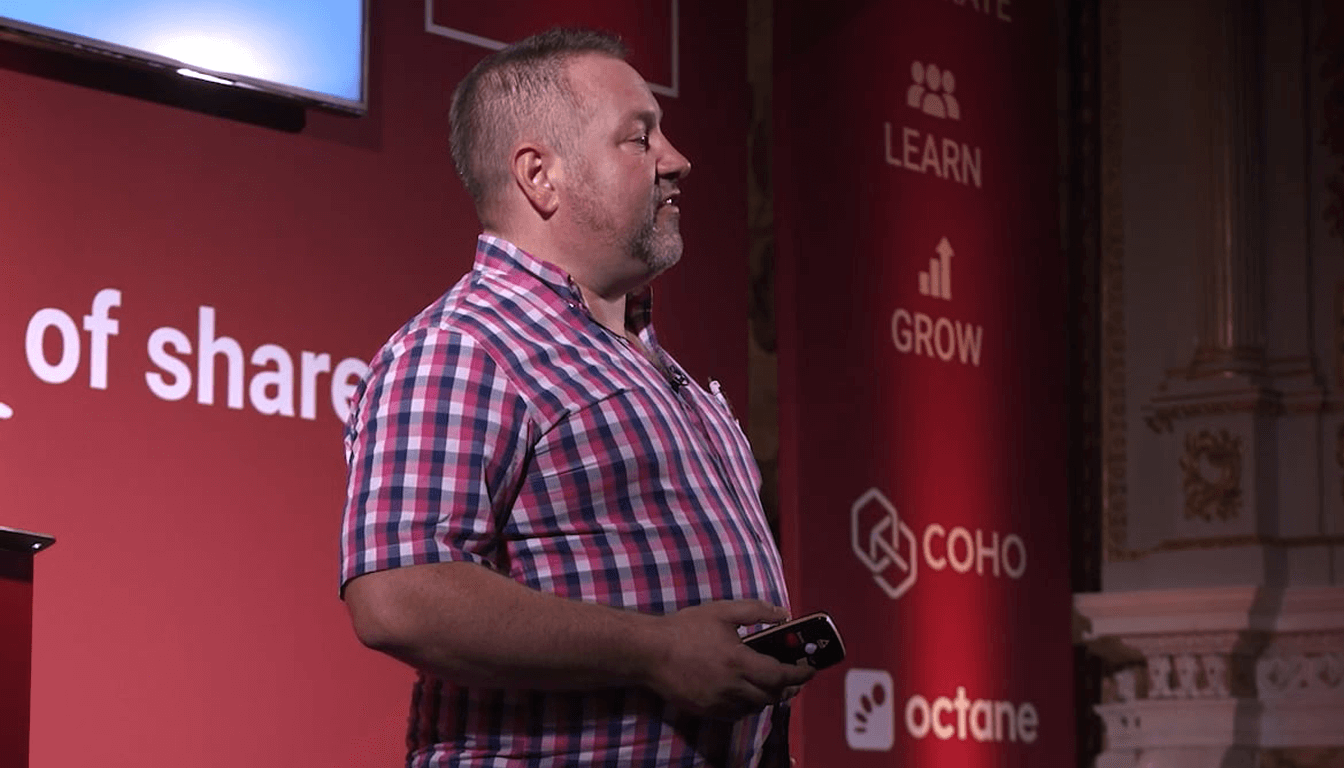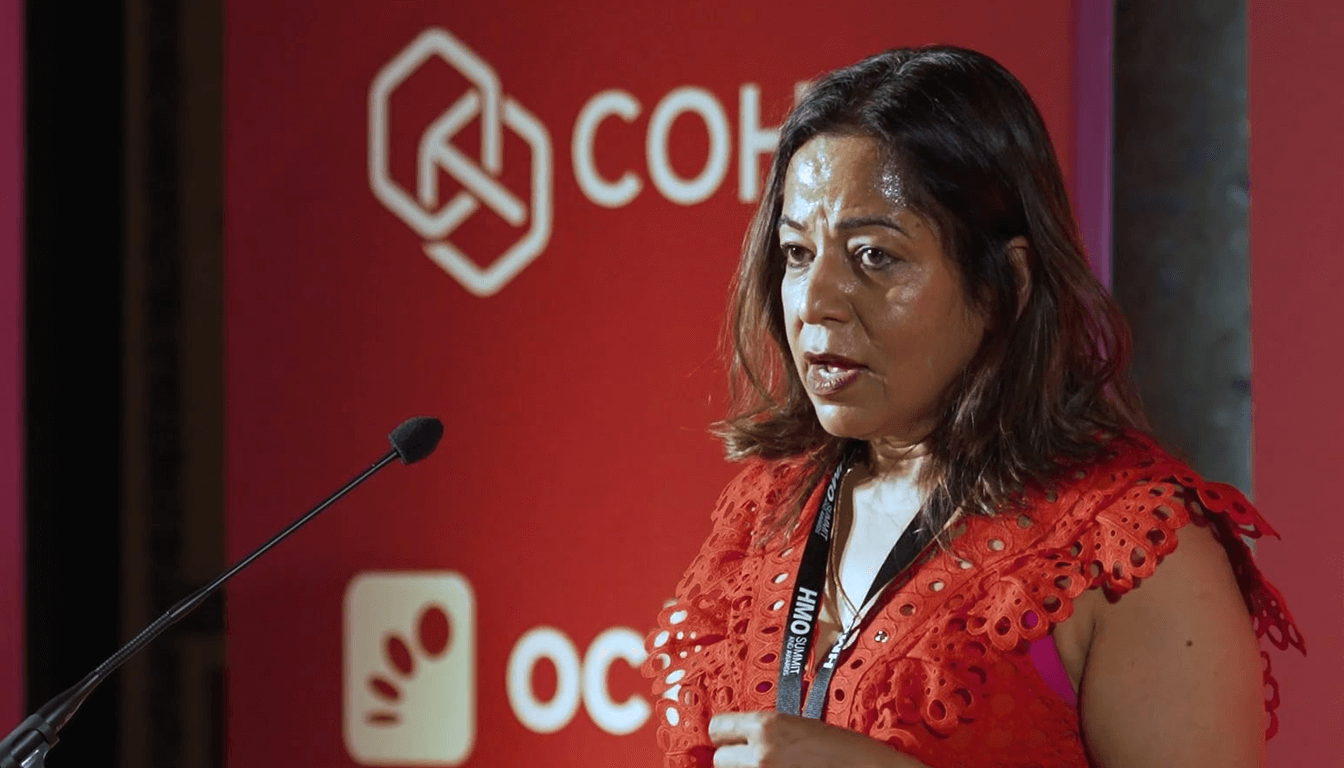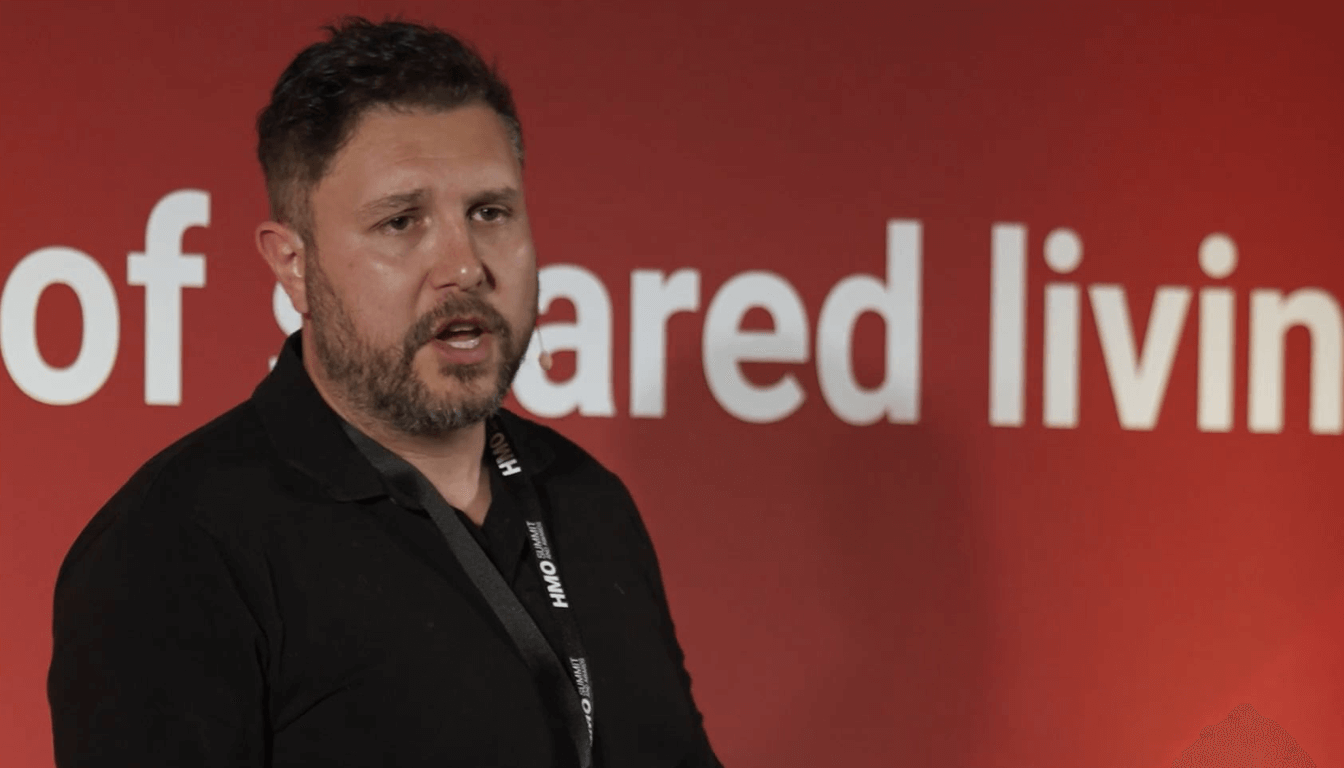Adam Lawrence calls himself a data geek, and he owned that label at the HMO Summit. Where much market commentary leans toward sensational headlines and short-term noise, Adam spent his slot building a calm, evidence-first view of where the UK housing market is actually heading,and what that means for HMO operators. He walked through four interlocking forces: population and urbanisation trends, the ever-important interest-rate picture, evolving tenant behaviour and tenancy economics, and the regulatory and product forces that will reshape supply. Below I turn his talk into a long-form narrative you can use as a strategic lens for buying, holding or converting property over the remainder of the decade.
Adam’s starting point was deliberately mundane: the numbers are what matter. If you want to understand demand, you should start with people. The Office for National Statistics projects sustained population growth through the 2030s and beyond; recent official projections point to the UK adding millions of residents over the next decade, lifting the population toward the low 70 millions in the early 2030s. That growth, concentrated in urban areas, is the fundamental reason why shared living and HMOs remain such a structurally relevant housing solution. Urbanisation and population growth don’t get fixed overnight by policy announcements,they change the arithmetic of housing supply and long-run demand.
Once you accept that there are more people to house,and more people choosing to rent,the next variable that shapes everything is money: funding costs and the yield curve. Adam stressed that British mortgage pricing typically follows global capital movements, with the US often leading and UK markets lagging. For market signals you can actually use to time decisions, he suggested watching SONIA and the money markets rather than only focusing on headline Bank of England meetings. The short version: market-implied rates in recent months have pointed to a gradual easing from the peaks, not an overnight collapse; longer-term bond yields, however, remain meaningfully above the ultra-low levels of a few years ago. The upshot for operators is practical: finance will likely be neither as cheap as it was in 2020–21 nor explosively unaffordable, but plan for a higher-for-longer cost of debt than the pre-2019 era. (If you want to time a refinance or commit to a long fix, watch SONIA and the swaps curve as part of your decision-making.)
The third pillar in Adam’s argument was tenant economics and behaviour. He pointed to clear, measurable shifts: more people renting for longer, a growing cohort of working-age adults clustered in urban centres, and changing patterns in how people work. Those trends matter for HMOs because they shift the typical tenant profile. Where thirty years ago ownership was the norm for many of today’s 25–39-year-olds, the share who now rent is much larger; a substantial and growing proportion of the population is urban and young enough to be in the HMO sweet spot. At the same time, hybrid working has become a significant reality for degree-qualified tenants,the people who often populate professional HMOs,which changes product requirements: fast internet, quiet corners, and thoughtful communal spaces for people who may be home during the day. These are not small preferences; they alter what tenants will pay for and what will retain them.
Adam used that behavioural backdrop to make two practical points about tenancy economics that every operator should internalise. First, tenancy lengths are trending upward: tenants are staying longer on average, which compounds the value of a “sticky” HMO product because each avoided void saves marketing, refurbishment and lost-rent costs. Recent industry data from tenancy registries and platforms suggests that average tenancy duration across the market has lengthened, which aligns with the anecdotal evidence many operators are seeing in their portfolios and is consistent with platform analyses of shared-living demand. Second, the micro-economics of yields vary sharply by city and by HMO configuration: larger 5–6 bedroom HMOs often deliver substantially better gross yields than smaller 3–4 bedroom conversions because scale compounds rent while incremental management costs don’t rise linearly. If you accept that both tenancy length and room count matter materially, the arithmetic that drives which deals are worth doing changes,and it matters more than headline yield alone.
Regulation and compliance form the fourth pillar of Adam’s landscape. He emphasised that the next few years will not be a repeat of the low-compliance era. Local authorities are tightening licensing regimes, additional HMO licensing and Article 4 directions are proliferating, and national-level reforms aimed at renters’ rights and decent-home standards are raising the compliance bar. Those changes squeeze marginal players,landlords who rely on thin margins and low service standards,and open space for compliant, professional operators who can absorb or pass on costs while offering secure tenancies. The practical consequence? Some existing HMO owners are electing to exit the market, which increases for-sale stock in the short term and creates acquisition and consolidation opportunities for well-capitalised buyers. In short: prepare to meet higher standards, and see regulation as a market filter that will, over time, favour scale, governance and operational capability. (Adam’s direct admonition: if you haven’t got your compliance and record-keeping in order, now is the time.)
A few themes threaded throughout Adam’s address and deserve unpacking because they change the investment calculus. He urged operators to measure return on time and return on effort as loudly as they measure yield. Two deals that look identical on paper can be radically different opportunities once you account for project length, founder time, planning risk and capital recycling speed. A conversion that takes twelve months and ties up management time may deliver a higher headline yield but a much lower annualised return than a quicker, less capital-intensive conversion you can repeat multiple times in the same period. Treat time as a scarce input and model it explicitly; the portfolio-level compounding of “speed to cash” matters more than most spreadsheets admit.
Adam also flagged the structural chance represented by commercial-to-residential conversions and partnerships with public-sector bodies. With office demand still recalibrating post-pandemic, some commercial estates are being sold at pricing that makes conversion economics attractive,provided you can manage planning, building regs and fire-safety upgrades. Where you can convert at scale, the delta between purchase price and per-room rental income can produce compelling returns, though the work is not trivial. Similarly, where local authorities need capacity for temporary or supported housing, long-term leases or contracts with registered providers can deliver stable income streams if you’re prepared to meet their compliance and service expectations.
Finally, Adam’s sober look at the macro,long-term bond yields, the yield curve and the rising cost of capital,is a reminder that property is not insulated from broader capital-market shifts. If the bond market is pricing in a higher-for-longer inflation reality, then the long-term cost of debt is likely to be higher than many investors expect. That makes the structural advantages of HMOs,ability to generate higher per-unit yields, the option value of repurposing stock, and the efficiency gains from scaled management,more salient. It also means that operators should not rely on a dramatic return to the ultra-cheap finance of a few years ago; instead, they should design businesses that are resilient to higher funding costs and that convert capital into cash faster.
What to do next (strategic moves inspired by Adam’s view)
If you take Adam’s data-driven perspective seriously, three strategic responses follow naturally.
- First, prioritise product-market fit for urban, professional tenants. These are the cohorts who are growing in number, are more likely to pay for better communal living, and who value stability. That means investing in internet, soundproofing, adaptable workspaces and a community-oriented management approach.
- Second, formalise a decision matrix that incorporates return on time and return on effort, not just headline yield. For every acquisition or conversion, list months to completion, founder-days required, planning risk, and expected void length; then normalise your expected returns by project duration. That will help you avoid deals that look good on yield but destroy capital velocity.
- Third, get compliant and get operationally efficient. That combination wins in a tightening regulatory environment. If some owners are exiting because they can’t or won’t meet new standards, the ready buyers will be those who can show robust records, strong fire-safety and energy compliance, and efficient outsourced operations.
Adam finished with a practical encouragement that tied his data obsession back to pragmatic behaviour: property’s long arc still favours those who are data-driven, efficient with their time, and ready to meet regulatory standards head-on. Markets change, but demand driven by demographic shifts and urbanisation is one of the more stable tailwinds you can find. The winners will be operators who translate those macro trends into operational playbooks,the ones who think in terms of tenants, time, compliance and scalable product design.
Adam Lawrence calls himself a data geek, and he owned that label at the HMO Summit. Where much market commentary leans toward sensational headlines and short-term noise, Adam spent his slot building a calm, evidence-first view of where the UK housing market is actually heading,and what that means for HMO operators. He walked through four interlocking forces: population and urbanisation trends, the ever-important interest-rate picture, evolving tenant behaviour and tenancy economics, and the regulatory and product forces that will reshape supply. Below I turn his talk into a long-form narrative you can use as a strategic lens for buying, holding or converting property over the remainder of the decade.
Adam’s starting point was deliberately mundane: the numbers are what matter. If you want to understand demand, you should start with people. The Office for National Statistics projects sustained population growth through the 2030s and beyond; recent official projections point to the UK adding millions of residents over the next decade, lifting the population toward the low 70 millions in the early 2030s. That growth, concentrated in urban areas, is the fundamental reason why shared living and HMOs remain such a structurally relevant housing solution. Urbanisation and population growth don’t get fixed overnight by policy announcements,they change the arithmetic of housing supply and long-run demand.
Once you accept that there are more people to house,and more people choosing to rent,the next variable that shapes everything is money: funding costs and the yield curve. Adam stressed that British mortgage pricing typically follows global capital movements, with the US often leading and UK markets lagging. For market signals you can actually use to time decisions, he suggested watching SONIA and the money markets rather than only focusing on headline Bank of England meetings. The short version: market-implied rates in recent months have pointed to a gradual easing from the peaks, not an overnight collapse; longer-term bond yields, however, remain meaningfully above the ultra-low levels of a few years ago. The upshot for operators is practical: finance will likely be neither as cheap as it was in 2020–21 nor explosively unaffordable, but plan for a higher-for-longer cost of debt than the pre-2019 era. (If you want to time a refinance or commit to a long fix, watch SONIA and the swaps curve as part of your decision-making.)
The third pillar in Adam’s argument was tenant economics and behaviour. He pointed to clear, measurable shifts: more people renting for longer, a growing cohort of working-age adults clustered in urban centres, and changing patterns in how people work. Those trends matter for HMOs because they shift the typical tenant profile. Where thirty years ago ownership was the norm for many of today’s 25–39-year-olds, the share who now rent is much larger; a substantial and growing proportion of the population is urban and young enough to be in the HMO sweet spot. At the same time, hybrid working has become a significant reality for degree-qualified tenants,the people who often populate professional HMOs,which changes product requirements: fast internet, quiet corners, and thoughtful communal spaces for people who may be home during the day. These are not small preferences; they alter what tenants will pay for and what will retain them.
Adam used that behavioural backdrop to make two practical points about tenancy economics that every operator should internalise. First, tenancy lengths are trending upward: tenants are staying longer on average, which compounds the value of a “sticky” HMO product because each avoided void saves marketing, refurbishment and lost-rent costs. Recent industry data from tenancy registries and platforms suggests that average tenancy duration across the market has lengthened, which aligns with the anecdotal evidence many operators are seeing in their portfolios and is consistent with platform analyses of shared-living demand. Second, the micro-economics of yields vary sharply by city and by HMO configuration: larger 5–6 bedroom HMOs often deliver substantially better gross yields than smaller 3–4 bedroom conversions because scale compounds rent while incremental management costs don’t rise linearly. If you accept that both tenancy length and room count matter materially, the arithmetic that drives which deals are worth doing changes,and it matters more than headline yield alone.
Regulation and compliance form the fourth pillar of Adam’s landscape. He emphasised that the next few years will not be a repeat of the low-compliance era. Local authorities are tightening licensing regimes, additional HMO licensing and Article 4 directions are proliferating, and national-level reforms aimed at renters’ rights and decent-home standards are raising the compliance bar. Those changes squeeze marginal players,landlords who rely on thin margins and low service standards,and open space for compliant, professional operators who can absorb or pass on costs while offering secure tenancies. The practical consequence? Some existing HMO owners are electing to exit the market, which increases for-sale stock in the short term and creates acquisition and consolidation opportunities for well-capitalised buyers. In short: prepare to meet higher standards, and see regulation as a market filter that will, over time, favour scale, governance and operational capability. (Adam’s direct admonition: if you haven’t got your compliance and record-keeping in order, now is the time.)
A few themes threaded throughout Adam’s address and deserve unpacking because they change the investment calculus. He urged operators to measure return on time and return on effort as loudly as they measure yield. Two deals that look identical on paper can be radically different opportunities once you account for project length, founder time, planning risk and capital recycling speed. A conversion that takes twelve months and ties up management time may deliver a higher headline yield but a much lower annualised return than a quicker, less capital-intensive conversion you can repeat multiple times in the same period. Treat time as a scarce input and model it explicitly; the portfolio-level compounding of “speed to cash” matters more than most spreadsheets admit.
Adam also flagged the structural chance represented by commercial-to-residential conversions and partnerships with public-sector bodies. With office demand still recalibrating post-pandemic, some commercial estates are being sold at pricing that makes conversion economics attractive,provided you can manage planning, building regs and fire-safety upgrades. Where you can convert at scale, the delta between purchase price and per-room rental income can produce compelling returns, though the work is not trivial. Similarly, where local authorities need capacity for temporary or supported housing, long-term leases or contracts with registered providers can deliver stable income streams if you’re prepared to meet their compliance and service expectations.
Finally, Adam’s sober look at the macro,long-term bond yields, the yield curve and the rising cost of capital,is a reminder that property is not insulated from broader capital-market shifts. If the bond market is pricing in a higher-for-longer inflation reality, then the long-term cost of debt is likely to be higher than many investors expect. That makes the structural advantages of HMOs,ability to generate higher per-unit yields, the option value of repurposing stock, and the efficiency gains from scaled management,more salient. It also means that operators should not rely on a dramatic return to the ultra-cheap finance of a few years ago; instead, they should design businesses that are resilient to higher funding costs and that convert capital into cash faster.
What to do next (strategic moves inspired by Adam’s view)
If you take Adam’s data-driven perspective seriously, three strategic responses follow naturally.
- First, prioritise product-market fit for urban, professional tenants. These are the cohorts who are growing in number, are more likely to pay for better communal living, and who value stability. That means investing in internet, soundproofing, adaptable workspaces and a community-oriented management approach.
- Second, formalise a decision matrix that incorporates return on time and return on effort, not just headline yield. For every acquisition or conversion, list months to completion, founder-days required, planning risk, and expected void length; then normalise your expected returns by project duration. That will help you avoid deals that look good on yield but destroy capital velocity.
- Third, get compliant and get operationally efficient. That combination wins in a tightening regulatory environment. If some owners are exiting because they can’t or won’t meet new standards, the ready buyers will be those who can show robust records, strong fire-safety and energy compliance, and efficient outsourced operations.
Adam finished with a practical encouragement that tied his data obsession back to pragmatic behaviour: property’s long arc still favours those who are data-driven, efficient with their time, and ready to meet regulatory standards head-on. Markets change, but demand driven by demographic shifts and urbanisation is one of the more stable tailwinds you can find. The winners will be operators who translate those macro trends into operational playbooks,the ones who think in terms of tenants, time, compliance and scalable product design.









